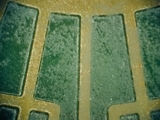|
|
|
| Ask the Experts | |||||||
|
|||||||
|
March 29, 2018 - Updated September 14, 2009 - Originally Posted Hard Water Contamination
R. A. |
|||||||
| Expert Panel Responses | |||||||
|
It is highly recommended using De-ionized water for rinse cycles as well as for mixing/diluting the water-based cleaning agents for the wash cycles. There are several reasons why you could be observing the film: * Most Axarel products are insoluble in water, and therefore it is nearly impossible to rinse the Axareal off the board surface with water, especially if the rinse water is used at ambient temperature. Hot rinse water may able to resolve the technical issue, but there is no guarantee. * Second reason could be hard water used for rinsing purposes. * Third reason maybe the partially removed flux residues. You could send Zestron few parts that exhibit this appearance for analytical investigation and our engineers could advise you whether this is related to your current cleaning agent's rinsability or the hard water used or the cleaning performance issue.
Application Technology Manager Zestron America Mr. Tosun has published numerous technical articles. As an active member of the SMTA and IPC organizations, Mr. Tosun has presented a variety of papers and studies on topics such as "Lead-Free Cleaning" and "Climatic Reliability".
I am not an expert when it comes to cleaning but I do know a little bit about chemistry as one of my companies, Florida Cirtech blends chemicals for the Printed Circuit Fabrication industry. In the Fab industry we use a basic solution with a chelating agent which should solubilize this residue. I think you might be able to wash the circuit boards off with a solution like this and then rinse with DI water. I suggest checking with an expert like Kyzen as they might have a solution that can solve your problem.
President FCT Assembly Mike Scimeca created FCT Assembly after the purchase of Fine Line Stencil, Inc., and consists of two major operations: stencil manufacturing and the manufacturing of electronic assembly products such as solder paste, flux and solder bar.
We have recoved bare boards using sapoinified DI water with our Aquastorm 200 removing tap water residues and recovered solderability as well as removing the contamination. Please contact me for details because all saponifiers do not work.
President/Senior Technical Consultant Foresite Mr. Munson, President and Founder of Foresite, has extensive electronics industry experience applying Ion Chromatography analytical techniques to a wide spectrum of manufacturing applications.
If it is hard water stains, I would try a solution that will suspend the mineral deposits. The Axarel sounds like a flux remover and as a result it is drying to fast on the board to remove the hard water deposits.
Regional Sales Manager OK International Inc. Ed Zamborsky is a Regional Sales & Technical Support Manager for Thermaltronics, located in New York. His position requires frequent customer visits throughout North America and the Caribbean and his position encompasses not only sales but the role of trainer and master applications engineer for all of Thermaltronics products. His expertise includes such specialties as hand soldering, convection and conduction reflow techniques, array rework, fluid dispensing equipment, and fume extraction. Ed has authored many articles and has presented many papers on topics such as; Low Volume SMT Assembly, Solder Fume Extraction, SMT Rework, BGA Rework, Lead-Free Hand Soldering, High Thermal Demand Hand Soldering, Lead Free Visual Inspection and Lead Free Array Rework.
If it is from hard water, it can be restored by using a solution of pure water with a chelating agent in it, such as EDTA. This should "dissolve" the residue, if it is salts from hard water. Then rinsing with ultra pure water should 'do the trick'.
Chairman Polyonics, Inc. Jim Willimas is a PhD Chemist in Polymers and Materials Science. He specialize in printing, cleaning, inks, and coatings used in electronics manufacturng operations. Williams has more than 30 years experience.
|
|||||||
| Submit A Comment | |||||||
|
Comments are reviewed prior to posting. You must include your full name to have your comments posted. We will not post your email address. |
|
Free Newsletter Subscription
Circuitnet is built for professionals who bear the responsibility of looking ahead, imagining the future, and preparing for it. Insert Your Email Address |
|
|







